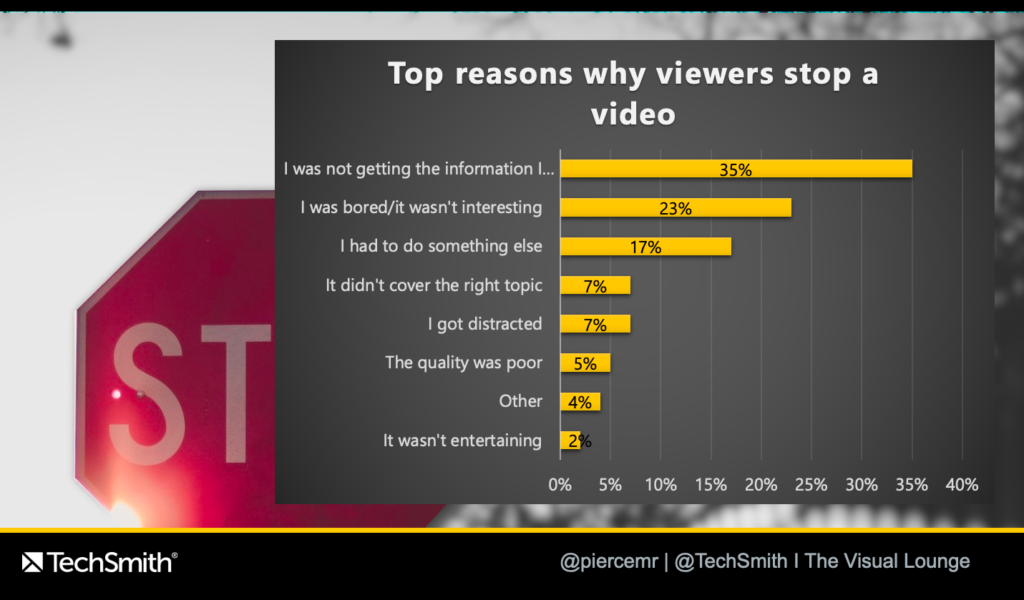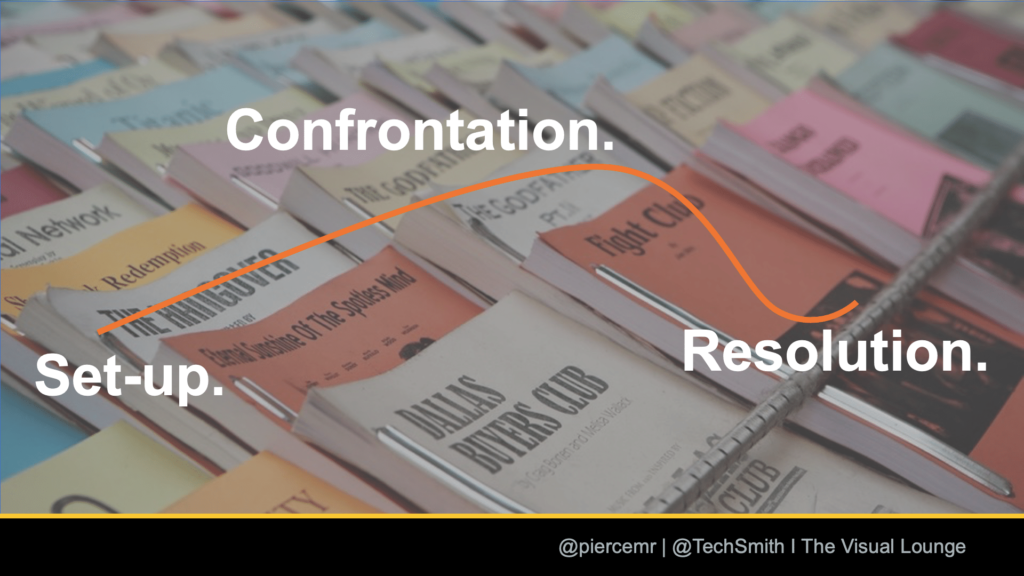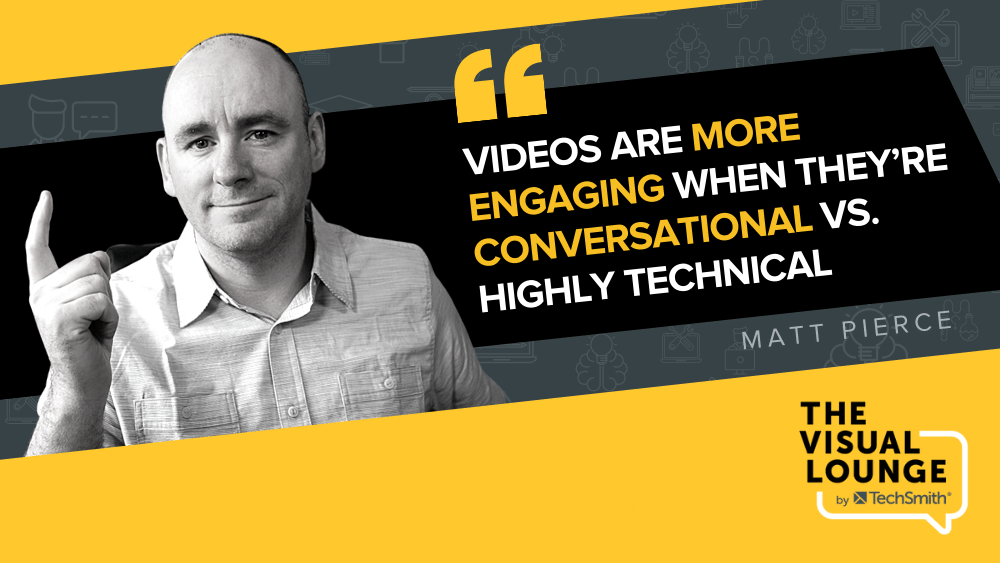Is there a silver bullet for making engaging video?
Think about a video that’s really captivated you before. What was it about the video that made you not want to look away? Did it use compelling visuals or a storyline that sucked you in? Or perhaps it left you with some food for thought.
There are many techniques video creators use to make their videos engaging. Unfortunately, there’s no silver bullet, but there are many tips and tricks you can learn to help draw people in and keep them watching your videos.
In this episode, I share lessons learned for making engaging video from my own experience in the video industry. I’ll show the difference between passive and active engagement strategies and explains how to create truly captivating videos.
Why should you focus on making engaging video?
Engagement is how committed your audience is to your content. It’s usually measured or monitored by the actions your audience takes while consuming that content. Suppose your video is on YouTube and a person watching likes the video or leaves a comment about the topic, this would show that they’re engaged.
Depending on the context, you may need your audience to commit to your video in different ways. You might want them to commit to watching the full video or engage with the content. But, in order for your audience to commit, you need to persuade them by making engaging videos.
Ultimately, your video is battling many other things for your audience’s attention. People are busy and distracted, so your video needs to be compelling enough to grab someone and hold their focus.
Making engaging video relevant and interesting

There are many different techniques you can use to make your videos more engaging. But without this one thing, your video will not be engaging for an audience.
Relevance.
When a video is relevant, by which we mean, solves a problem your audience is having, is relatable, or covers a topic they’re interested in, then they are far more likely to engage. But when it’s not relevant, they may not even opt to watch the video in the first place, let alone watch the entire video.
If your audience isn’t getting the information they expected, in other words, that’s relevant to them, there’s an extremely high chance that they’ll stop watching the video. In our research, we found that 35% of people say they’d stop watching a video if it’s not relevant.

You can use video image thumbnails, titles, descriptions, and other features to signal to your audience if the video is relevant to them. It’s best that you align these assets with what’s happening in your video, so your audience know what information to expect, rather than trick them into watching something they don’t want.
This research also shows that the next most important factor for audiences is interest. 23% of people said if a video didn’t interest them enough, they’d stop watching. This is the entertainment factor. Perhaps your audience is drawn in by a captivating storyline, beautiful graphics, or something else that piques their interest.
So, relevance and interest are the two most important factors for making engaging videos. Your videos need to be either informative, entertaining, or both, to stand the best chance at keeping viewers engaged.
Passive and active strategies for making engaging video
There are two main approaches for making engaging videos. One encourages audience participation, and the other uses techniques to create a video that truly pulls people in. We call these active and passive strategies.
Active strategies are where you give your audience a task or get them to interact with your video in a certain way. This could be to reinforce their learning or to encourage them to think more deeply about the subject.
Passive strategies rely solely on the video creator to bring a captivating video to the audience. In this case, the viewer doesn’t have to take any action, but the techniques used should motivate them to focus and pay attention.
We’re going to break down some of the active and passive strategies you can use in your videos to make them more engaging, starting with 10 passive strategies…
Passive engagement
- Use storytelling
Storytelling is a well-known concept for keeping content compelling. We’ve used storytelling throughout history to draw in audiences and spread messages, and it’s how our brains like to digest information. So, storytelling is a powerful tool.
But it’s not suitable for every situation. If your video is teaching a process, for example, it may not be necessary to use storytelling. Consider your video’s context before attempting to weave in storytelling elements. If your audience doesn’t need or want them, it may deter them from watching the video or getting the most value from it.
There are many different ways you can incorporate storytelling into your video. If you’re just starting out, try using a simple structure with a clear beginning, middle, and end, such as set-up, confrontation, and resolution.

To learn more about how to unlock the power of storytelling in your videos, check out the Basics: Writing and Using Scripts course at the TechSmith Academy.
- Be conversational
While you may need to use technical language in certain contexts, the most engaging videos are conversational videos. Complicated language can alienate a good part of your audience and makes it more difficult to access the content. Whereas if you’re talking or explaining something like you would to a friend, it breaks down barriers between you and your audience.

- Evoke emotion and be energetic
Bringing energy to your videos – even if they’re screencasts – can drastically impact how engaging they are. Showing that you’re excited to talk about a topic by emphasizing your voice and body language communicates to your audience that this video is something to get excited about.
Excitement is just one emotion you could tap into in your video. Advertisements, for example, commonly pull at our heartstrings or try and create an emotional response because it makes the content more engaging and memorable.
But, like storytelling, there is a time and a place for evoking certain emotions in your videos. So, consider the context before you make your next how-to video a tear-jerker.
- Use humor
Humor can be tricky to incorporate in your videos, but if there are ways of weaving it suitably into your content, it can have a big effect on your audience. You could add a blooper reel to the end of your video, write some relatable jokes into the script, or splice your video with funny B-roll.
If you’ve not used humor in your videos before, do give them a test run before you publish them. Humor is very subjective and what you might think is funny may not land right with your audience.
- Have good audio quality
Good quality audio itself isn’t necessarily engaging, but bad quality audio will stop people watching your video. In this case, making sure you have clear audio prevents your audience from looking for the information they want elsewhere. To put it simply, good quality audio makes your video more accessible, which keeps people watching for longer.
- Incorporate music
Music is another powerful tool you can use to elevate meaning in your videos or make them more exciting. However, it should be used cautiously. If you use the wrong style of music or make it too loud, it can distract from what you’re trying to communicate. But, if used appropriately, music can make your video more dynamic and interesting.
- Use interesting and relevant visuals
Whether you’re using B-roll, screencast footage, or recording yourself, your visuals need to be relevant and interesting to keep your viewers engaged. It’s vital to plan what you’re going to show to your audience and also understand why.
Storyboarding can help you think through what you need to show on screen and when. To find out how, visit the TechSmith Academy and check out the course, Basics: Creating & Using Storyboards.
- Don’t be afraid of color
Like music, color is a way of introducing more dynamic aspects to your videos. Adding splashes of color or changing color palettes based on your video’s message makes your video more pleasing to look at and may draw your audience in. You could include color in various ways, from the clothes you wear to your background or how you light your videos.
- Incorporate motion
When we’re tasked with looking at a still image for too long, our brains start to switch off. If your video has lots of motion, whether that’s zooming in and out on screencasts, or using a multicamera setup and switching between angles, your audience is more likely to pay attention. You can also cut away to B-roll or presentation slides to bring more motion to your video and keep your audience focused.
- Show faces
Faces are another incredibly powerful tool you can use to encourage people to watch or engage with your video. We’re naturally more drawn to content with faces in them than those without. You don’t have to show a face throughout your entire video. If you’re camera-shy, you may have to get inventive about how you incorporate them. But adding faces to your videos could help you to increase your overall engagement.
So, those are 10 passive strategies for making your videos more engaging. Now, let’s move onto four strategies for active engagement…
Active engagement
- Plan
No matter what kind of video you’re creating, if you want your audience to actively engage with it, you need to put a plan out how. Thinking strategically about how and why your audience will engage with your video means you can clearly explain what they need to do and the reasons behind it. If you’re creating training or learning materials, this approach is more likely to have a big impact and successfully educate your audience.
- Interact
Once you’ve planned how your audience are going to engage with your video, you may need to build some opportunities for interaction. This could be asking them to perform an action, such as download a document or fill out a survey.
If you’re working with live video, there are many different opportunities for interaction. In most cases though, you’ll be pre-recording your videos, where the options are more limited. So, you’ll need to think carefully about what interactive experiences you can include and what’s appropriate for your audience.
- Connect
Truly successful engagement goes beyond just consuming the video. Consider how your audience is going to continue their journey after they’ve watched it. Connecting with the creator or a community is a great way to keep the engagement going. Perhaps you could set up a discussion board where viewers could share their thoughts and opinions with others. Maybe find a way to connect your audience to a bigger, broader network.
- Follow through
For training videos in particular, encouraging your audience to take further action is a great way to increase their retention. Set your audience a task at the end of your video to get them to put what they’ve learned into practice. You could even hold them accountable by asking them to show you the results.
If you’ve found this article, video, or podcast episode helpful, we want to see how it’s influenced you. We encourage you to take one of the active or passive strategies you’ve learned about and incorporate it in your next video. Then, send your thoughts to us at thevisuallounge@techsmith.com – did it make your video more engaging? Will you be using this technique or any others going forward? We want to hear about it!
To find out more fantastic tips and advice about making engaging video, check out the TechSmith Academy.



Share